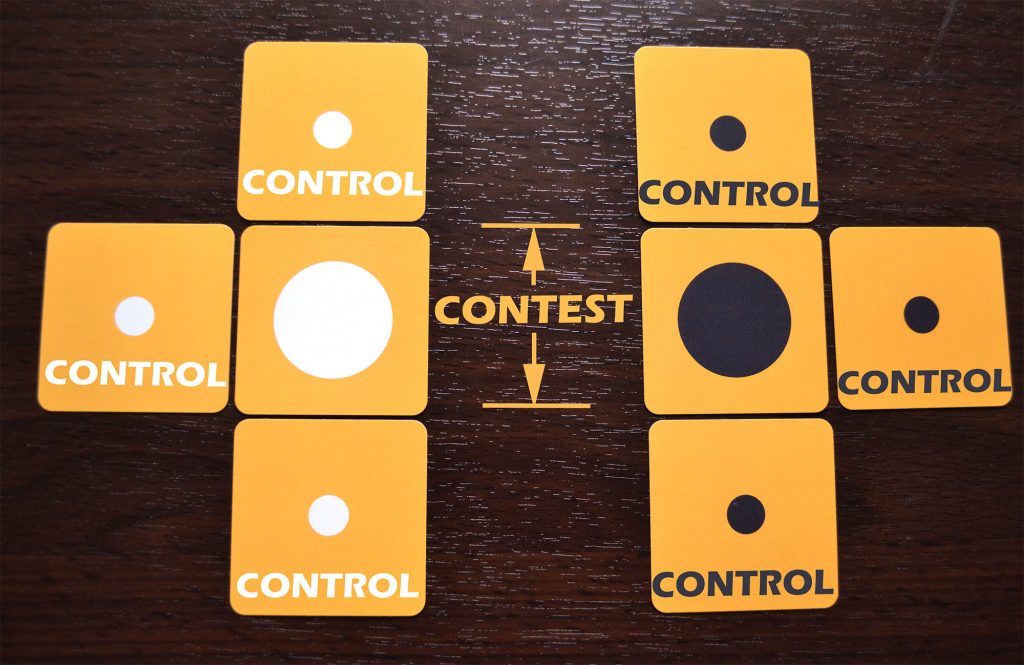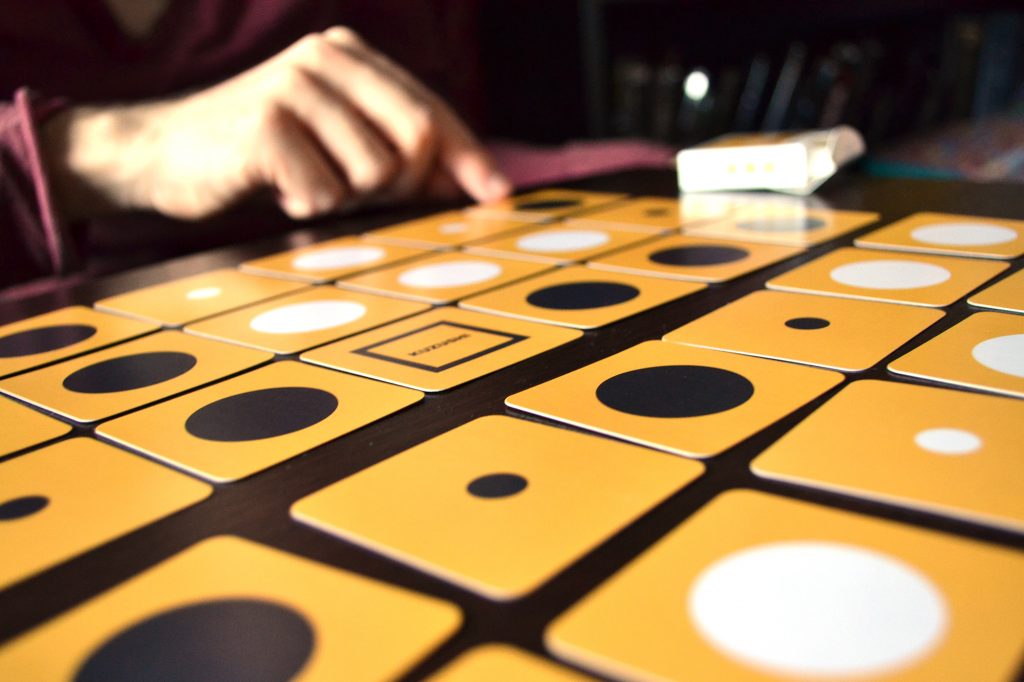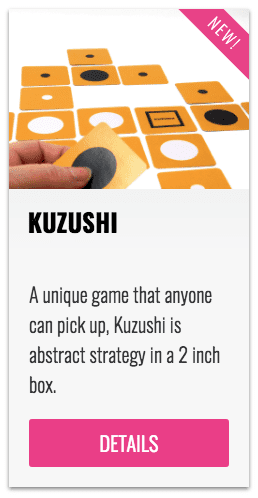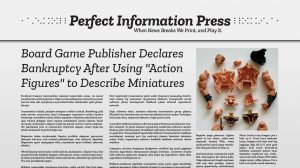In Judo, kuzushi is the art of imbalance: a subtle push or pull that shifts your opponent just enough that you can make your move. Kuzushi, by Gobico Games, is a tiny abstract strategy game that captures this spirit with a deck of cards smaller than your palm.
Size Matters
Kuzushi comes in a box small enough to fit in a pocket. It might even get lost in a purse. But at the heart of this little game is a mechanical system less like its card game contemporaries and more like a round of Checkers. Kuzushi is abstract strategy board game that tossed the board aside. It’s a card game, acting like a tile placement game, emulating an area control game. And it’s two inches wide.

In the box, you’ll find two slim decks (in black and white) that represent a player’s stones, as well as a single rule card and a starting space. Each card has two sides: base (big circle), and flag (little circle).

How to Play
Gameplay is simple. On a player’s turn, they do one of two things:
- Place a card, base-up, beside an existing card. Place a flag in each adjacent space you control. Remove opponent flags from each adjacent space you contest.
- Flip a flag card to its base side. Then, place and remove flags as above.
You control a space if you have the most base cards adjacent to it. You contest a space if you’re tied with your opponent.

Once a 6×6 grid has been filled, the game is over. Whoever has the most cards of their colour on the board wins. (Alternatively, you can win if you use all your cards.) The whole thing fills about a square foot by the end of the game.
So What’s It Like?
Kuzushi does an excellent job of something I didn’t think was possible: it evokes a feeling of classic abstract strategy games like Othello and Pente, but takes up less shelfspace than a deck of 52. A casual game takes about 10 minutes, a serious match more like 20.
At first glance– and through the first few playthroughs– I was concerned there might not be much underneath the surface of the game. Some moves seemed automatic. I wondered if, in spite of a sleek presentation and smart design choices, the game might not have a real spirit behind it. But in my fourth session, over a cup of coffee and two furrowed brows, my opponent and I entered a trance: thrust and riposte. We scanned the board with new eyes, and in doing so, stumbled onto fuller, deeper game. We found ourselves discovering something more.
If there’s a flaw in the design of Kuzushi, it’s that it’s easy to take a move for granted. It’s easy to glance at the slim deck and casually toss out a card with little concern of the consequences. Without pointed thought from either player, the game can slip by and fail to stir something in its participants. Where Kuzushi shines is in the sharp decisions that a focused player can tease out of it.

The game has been carefully balanced, and that shows in its play. There’s a clever rule that offsets first player advantage: setting up the game, second player begins with a single card of their colour on the board that can’t be taken away. Talking with the designer, this was the result of a few million computer-simulated games. I like that kind of attention to detail.
The detail-minded design shows through in the rules, too. A single, double-sided card covered the basics in less space than it took me to explain them. I was left with a couple questions, but the designer considered this too: Kuzushi’s small box directs you towards an online FAQ for clarifications. The site is a living document– after I sent the publishing group a few more queries on gameplay, I was pleased to see their FAQ expanded. Someone obviously cares about this game.
Final Thoughts
Kuzushi is a pleasantly peculiar example of smart design decisions. A true pocket-sized abstract strategy game is hard to come by (sorry, Hive) and Kuzushi is a lovely thing to pull out for those in-between times. If you enjoy abstract strategy games– or, like me, have an ongoing fascination with the very small– Kuzushi is a fun treat to add to your library.
Disclaimer: Gobico provided us a free copy of Kuzushi for review, but the thoughts expressed here are my own.












Add Comment